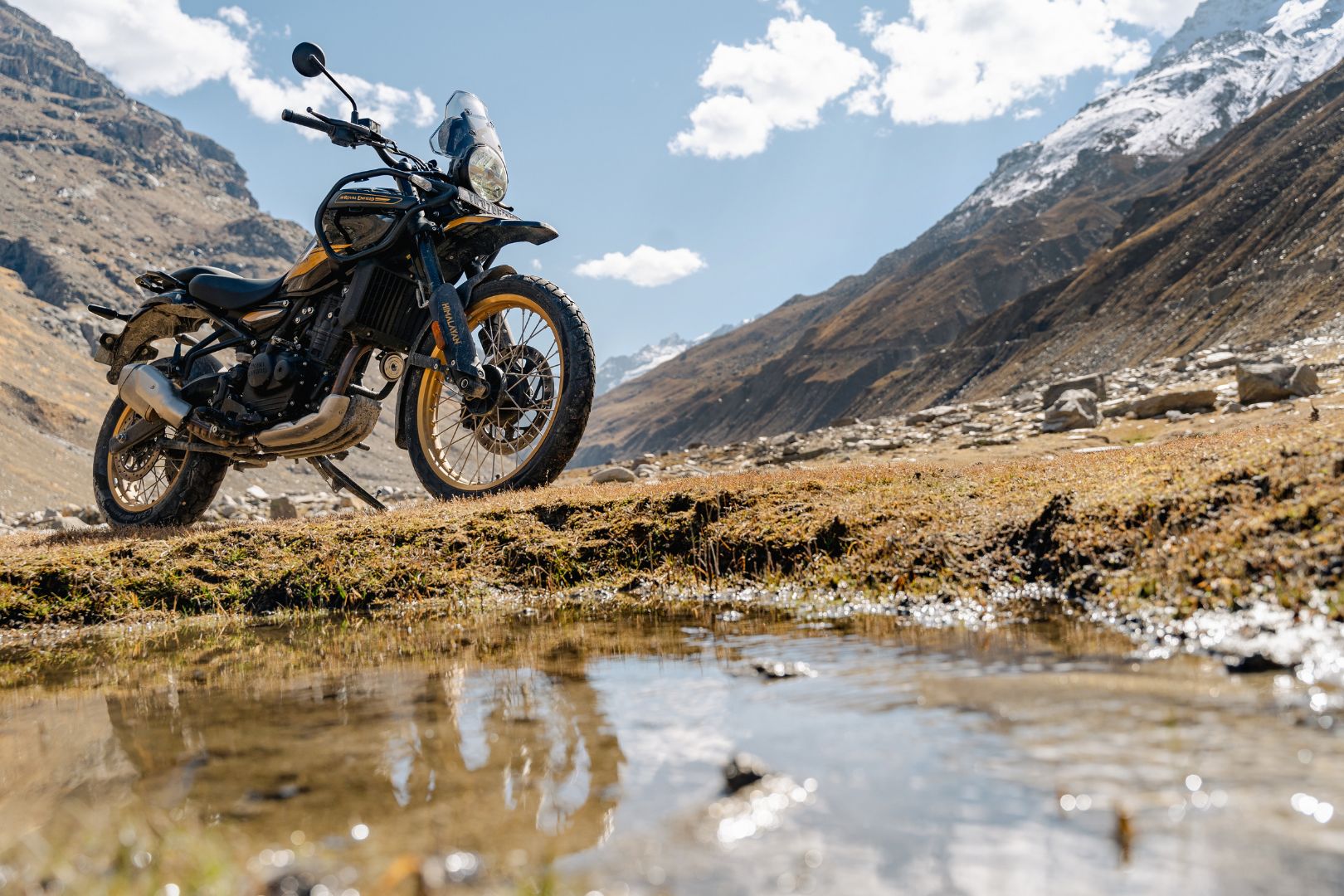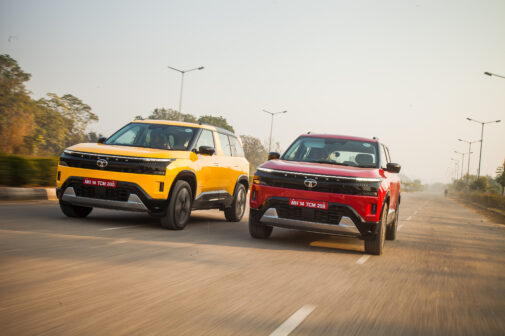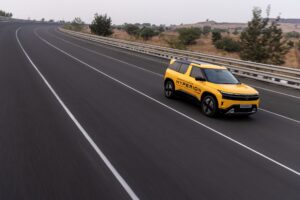Of all the Royal Enfield motorcycles, I was never the biggest fan of the Himalayan. I didn’t actively despise it, mind you, just that it never managed to nail that sweet spot with me… or the other way around. I liked it enough when I was on it, but never thought about it when I was off it. And that was pretty strange because I absolutely love at least one motorcycle from each of RE’s various platforms. Perhaps in a concurrent manner, RE felt the same — for me, the big revelation from the new Himalayan’s launch ride was that work on it started in 2017, just a year after the first one arrived. That should say it all, right? Well, no, the new motorcycle should.
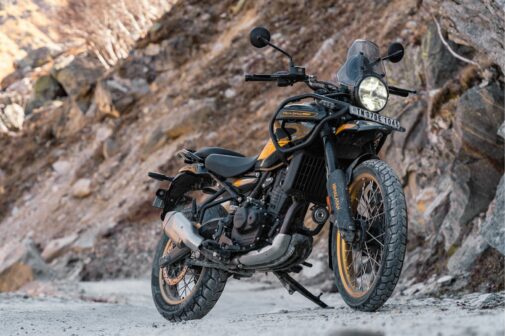
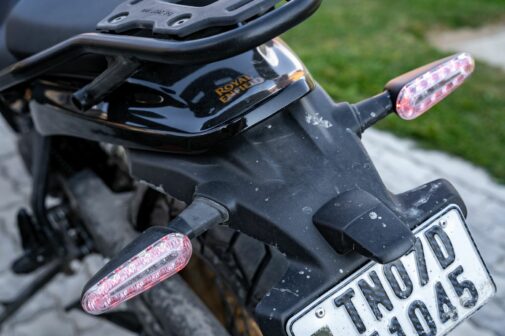
Upon arriving in Manali, I eyed and prodded the bike for a full shivering day before riding it. And it seemed that RE had managed to make an all-new motorcycle that still felt familiar. That’s quite the achievement, of course, since the new Himalayan has absolutely nothing in common with the previous one. Perhaps it was just the round headlamp wearing its tall visor-hat and the subframe that held them all together that evoked a strong sense of déjà vu, because the rest of the bike was as new as it gets. And in that Hanle Black, the bike reminded many of BMW’s 40th anniversary colours for its GS and some others of the Suzuki V-Strom 650. Meanwhile, I simply liked it for what it was.
The Himalayan, given RE’s recent efforts, felt like it lived up to expectations of quality. This was a solid motorcycle, which shows up on the spec sheet as 196 kg — still 20-25 kg heavier than I’d have preferred. But the economics of manufacturing a motorcycle added up with modern-day electronics and pollution-curbing equipment equal weight. Nonetheless, I found that the Himalayan was packed with smart thinking to counter its heft, including the low-seat option, seat height was adjustable between 805 mm and 845 mm.
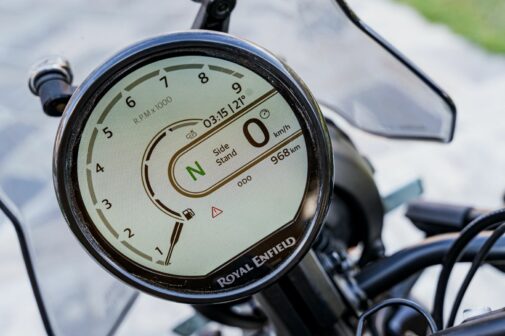
The new round TFT screen could show a map when paired to a phone. The new Sherpa 450 engine, the first oversquare RE one since I was born, reeked of modernity without cooling fins. And the swingarm mounts outside the main chassis made for a narrower waist, enabling legs of all lengths to find reassurance on planet Earth whenever required. What I was looking forward to the most, though, was the new engine.
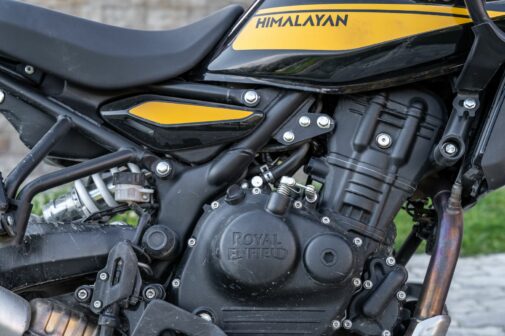
However, since we were riding at altitudes between 2000-4000 metres, there was a straightforward disclaimer from RE that we’d have 30 per cent less power from the all-new engine — in other words, not so much the real world. In additional estimated words, I had as much horsepower available via the new ride-by-wire throttle as the older Himalayan would offer at sea level. That did make sense, because the most I saw on the speedometer was 120 kph (RE claimed 150 kph+), where the older one at the similar heights rarely got past 80 kph with me on it. And so, it was no great surprise to find that the Himalayan turned nothing up to 11 high up in the rarified air of the Himalayas — but it did keep things at an entertaining 7. Good job, considering my teeth were chattering inside my helmet.

The simultaneously surreal and boring Atal Tunnel presented a speed limit of 60 kph for the most part, and the Himalayan chugged along at that rate in either fifth or sixth gear without fuss. That chugging part was a bit confusing, again, because the engine wasn’t a traditional RE long-stroke unit. Sat in that 9-km shaft of tedium, I had ample time to consider that some more clever thought had gone into making the engine feel like it did. And its sound, whether echoing in the Tunnel or in the open air of valleys, was quite apt as well. Especially past 4000 rpm, there was a distinct change in the intake as if a baffle had opened up somewhere. Of course, no such thing existed, and it was probably down to the whole breathing setup finding its sweet spot. On many occasions, I found myself thinking, ‘Never mind the place it’s named after, I want to ride it back on my usual streets and highways.’
In the many corners leading to the Atal Tunnel and scores of them after it, I found my fingers unable to brake because they were rendered unresponsive by the cold. Fortunately, my right foot was kept warm by the engine, and I resorted to regularly stomping on the brake pedal to avoid running into and destroying a part of the captivating scenery. Here, the long wheelbase helped a lot by providing a stable platform to calm my worries. One time, on a fast downhill approach to a corner, I hauled hard on the brakes to find the Himalayan gently twitching under me before settling down well before the entry. Just a reminder to be polite and understanding, nothing more. Other than that, I wasn’t even paying attention to how it handled, that’s how easy it was. I’m looking forward to what it feels like with 30 per cent more power, though.
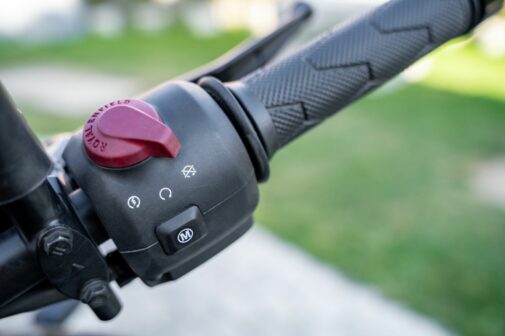
After a point, given the cold and the narrow unfamiliar roads, I vastly encouraged myself to keep things slow. The phone-cast map via the RE app was a brilliant idea; however, by the time I reached the midpoint of the ride, the phone was dead and the map vanished as well. It’s a great idea, but needs better execution; one option is probably one of those e-sim things that electric scooters have these days. Yes, there is a charging socket for your phone, but that kind of defeats the purpose of having a map on the bike’s screen, obviously. The fact that I, a person who doesn’t care a hoot about ‘connectivity features’ on a motorcycle, am dedicating a whole paragraph to this bit says quite a bit about the rest of the motorcycle. To be clear, there really isn’t much to fault with it.
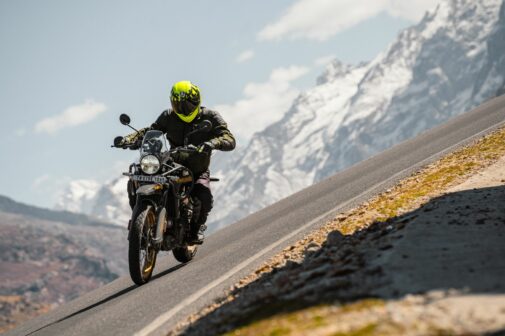
Except my pet bloody peeve, of course — tyres. Now, I might have a prejudice against those stock Ceats, having broken four bones on their previous iterations, two each time I crashed. But when I was riding downhill with an RE rider, pretty much going hell for Cordura and leather, they were quite acceptable. It’s just that they need the kind of attention that tyres did 10 years ago; maybe that was acceptable on the older one, but the new Himalayan needs and deserves better. In any case, that was it for my complaints. What was infinitely more important was how the Himalayan felt in the place it takes its name from.There was a certain intimate beauty to the way the Himalayan flowed through the mountain roads, quite similar to the one before but way faster and far more composed. The suspension walked the tightrope of compliance and stability, and made it all the way to the end every single time. I rode it through a stream, climbed a big boulder, rode two-up down a long off-road patch, and it didn’t fluster even once. And the only time the bike reminded me of the old Himalayan was when it chugged up rocky inclines in second gear. Make no mistake, this is nothing like the old bike and you will have to ride it to feel the difference because there is no comparison.
The Himalayan’s sweet nature made everything more beautiful when I was riding alone. There was no sense of, ‘Oh, what if something happens to the bike?’ or ‘Dammit, why did I fall behind and take the wrong turn?!’ Whatever speed was asked, the Himalayan delivered it with reassurance, feeling as if there was no possible wrong turn. That bodes well for everywhere else, as it should, because most people don’t live in the Himalayas. In the autumn colours of the trees, the brown of the lower mountains, and the white of the snowcaps, the Himalayan felt like it belonged. It was an instinctive feeling, not one that was designed and force-fed. I’d say that was a win in every way.

On the roughly 36 km I attempted off-road, just because I needed something to write about the Himalayan’s ability off the tarmac, I was thoroughly comfortable. Sat resolutely on the ample seat, the Himalayan chugged along (again) between 30-40 kph on a narrow rocky road, only tossing my backside up at the most abrupt obstructions. And when I got tired of it and found a straight-ish stretch, I wound the throttle back until 70 kph, only to realise that the suspension’s sweet spot is somewhere around that velocity. Clearly, the Himalayan could do a lot more off-roading than I could.
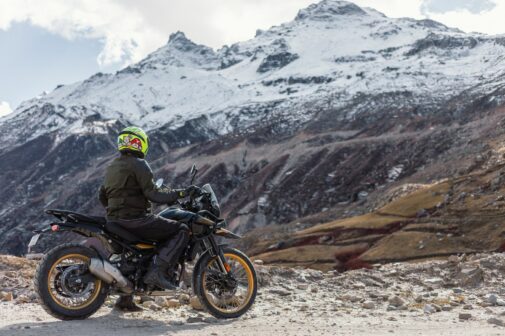
Over two days of riding the new Himalayan in the cold, I didn’t really find anything to fault except what I’ve mentioned above. It’s also not an accurate picture, of course, since the ABS overwhelmed the rear tyre and the throttle didn’t. But it wasn’t about a real-world test anyway. It was about learning that this new motorcycle is more capable, more embracing and more enabling than the one that carried the name before. If the older one was a gentle stream, the new Himalayan is a gushing torrent.
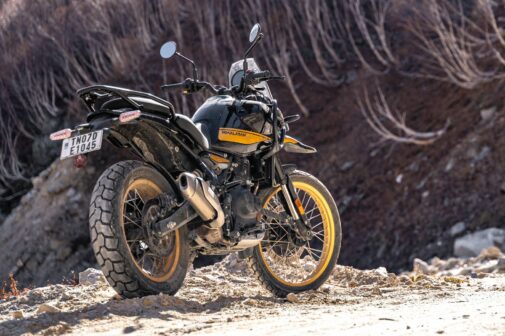
When I ride a motorcycle with altitude-sapped power and uncertain pricing, it’s difficult to say something definitive about it. Nonetheless, there are still many things to take note of. The new Himalayan is certainly a brilliant all-round motorcycle. If it can be fun in the Himalayas, it can be fun anywhere in the world. And by now, you must’ve seen it doing all sorts of fantastic things on the launch ride. The fact that better riders could do all those things, and I could do whatever I could, very much makes the case that this is a versatile motorcycle for all kinds of riders. All I can say in the end is this — the new bike is very unlike a Royal Enfield, but it’s very much a Himalayan.
MOTODATA
Royal Enfield HimalayanPOWERTRAIN
Displacement:
Max Power:
Max Torque:
Transmission:
452 cc, single
39.47 bhp @ 8000 rpm
4.07 kgm @ 5500 rpm
6-speed
TYRES
F/R: 90/90 R21 / 140/80 R17
DIMENSIONS
L/W/H (mm):
Wheelbase:
Ground Clearance:
Kerb Weight:
Fuel Capacity:
2245/852/1316
1510 mm
230 mm
196 kg
17 litres
PRICE
TBA





